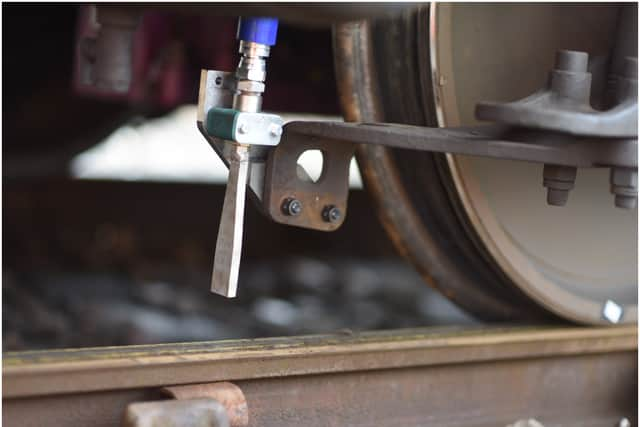Train delays: dry ice will be used to clear leaves off railway lines in bid to tackle delays this autumn
This article contains affiliate links. We may earn a small commission on items purchased through this article, but that does not affect our editorial judgement.
and live on Freeview channel 276
Dry ice is set to be used to clear leaves off railway lines in a bid to tackle train delays.
The leaf-clearing technique, which was developed by University of Sheffield engineers, will be trialled by operator Northern on a passenger train in the coming weeks.
Advertisement
Hide AdAdvertisement
Hide AdWe want to hear from you: let us know what you think about this story and be part of the debate in our comments section below
At a glance: 5 key points
- Pellets of dry ice will be fired in a stream of air from a passenger train onto rails, making leaves frozen and brittle. The dry ice then quickly turns back into gas, causing it to expand and destroy the leaves.
- Currently leaves are cleared by 61 special trains which deploy high-pressure water jets followed by a gel containing sand and steel grains to assist with braking.
- Engineers behind the dry ice system claim their method is significantly more efficient as it can be used by passenger trains which cover greater distances than the limited fleet of cleaning trains.


- It also does not leave a residue which can damage rails and train wheels, and can be used on the same stretch of railway more than once a day.
- The system has previously been trialled on test tracks and could be rolled out widely by 2023/24.
What’s been said
“This technology will make a step change in train performance during autumn, improving safety.
“It will provide more predictable braking and traction than current technology, and will help to improve train performance, reduce delays, increase passenger satisfaction and support the use of new technologies to enable greater network utilisation of the UK’s railways.
“It will be great for passengers, but also for all the train operators and Network Rail as well. It will make their lives much easier.”
Advertisement
Hide AdAdvertisement
Hide AdProfessor Roger Lewis, who is leading the development of the new method, speaking to the PA news agency
Background
Some 10 million trees line Britain’s railway, and thousands of tonnes of leaves fall onto the tracks every autumn.
When trains pass over the leaves it creates a slippery layer, with a similar effect to black ice on roads.
This leads to delays as trains must run at a reduced speed, accelerate slower and brake earlier.
Advertisement
Hide AdAdvertisement
Hide AdAutumn-related issues cost the railway industry approximately £345 million every year.
A message from the editor:
Thank you for reading. NationalWorld is a new national news brand, produced by a team of journalists, editors, video producers and designers who live and work across the UK. Find out more about who’s who in the team, and our editorial values. We want to start a community among our readers, so please follow us on Facebook, Twitter and Instagram, and keep the conversation going.
Comment Guidelines
National World encourages reader discussion on our stories. User feedback, insights and back-and-forth exchanges add a rich layer of context to reporting. Please review our Community Guidelines before commenting.